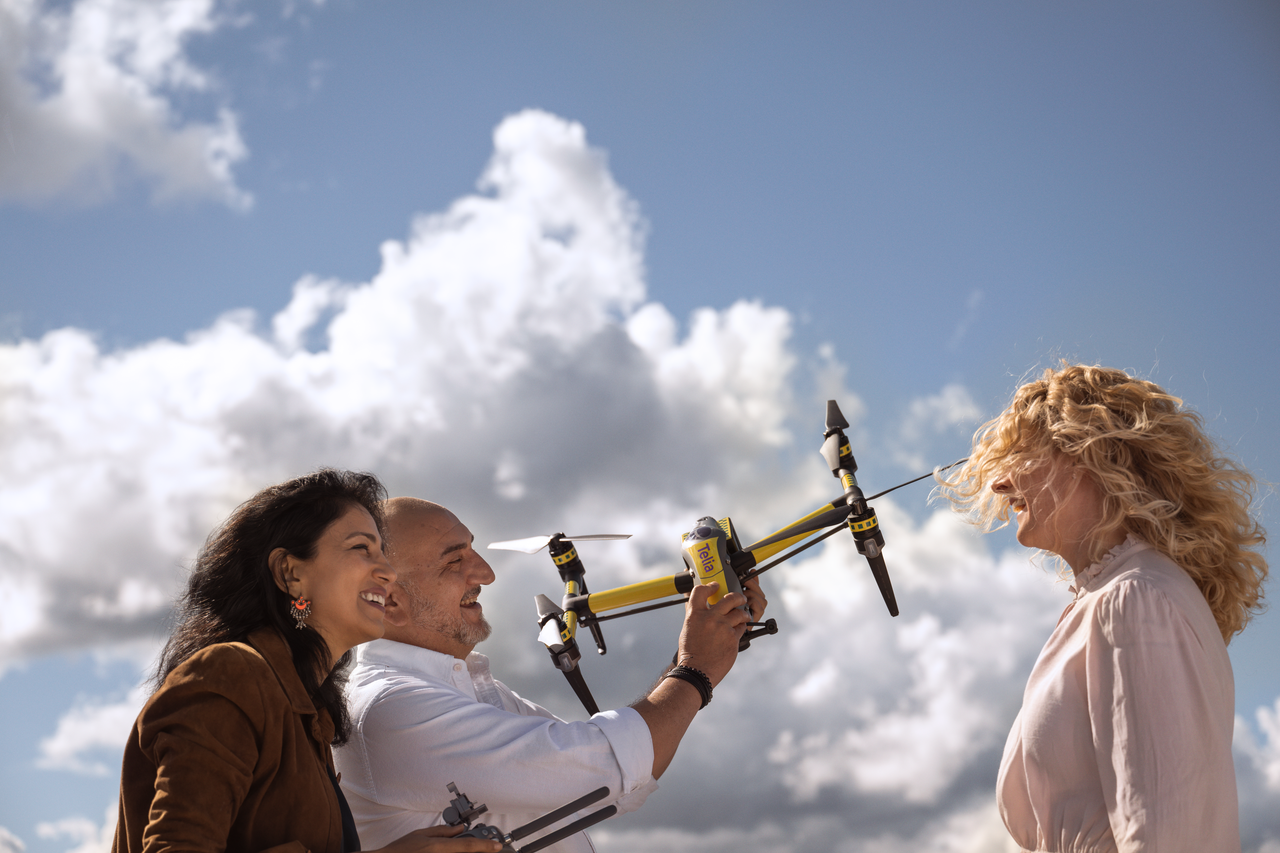As businesses face growing pressures to reduce their environmental footprint and respond to shifting consumer expectations, the circular economy has emerged as a practical and profitable solution. By prioritising reuse, refurbishment and recycling, companies can unlock new value streams, mitigate risks, and make progress on their sustainability goals. What will it take to move businesses from a linear ‘take-make-waste' model to a circular one?
This article draws on insights shared during our webinar on the challenges and opportunities of adopting circular economy practices in the ICT sector. The webinar brought together Rebekah Griffiths, VP Product Management & Strategy at Assurant; Mieke Järvinen, Sustainability Manager at Telia; Andrew Dunnett, Senior Vice President of Sustainability at e&; and Daniel Reid, Head of Secretariat at the Circular Electronics Partnership (CEP).
Key takeaways:
- Pilot, measure, and scale: Use small-scale initiatives to test circular strategies, measure their impact, and scale up what works.
- Collaborate with the business ecosystem: Build partnerships with suppliers and industry groups to create a cohesive circular value chain.
- Invest in infrastructure and technology: Streamline circular processes with automation, AI, and reverse logistics capabilities.
- Communicate the benefits: Internally, tie circularity to business goals like cost savings and risk reduction. Externally, highlight environmental and economic benefits to customers and stakeholders.
- Stay ahead of regulation: Align circular initiatives with evolving regulatory requirements to ensure compliance and reduce risk.
Why circularity matters
For businesses, circularity is an opportunity to futureproof operations and align with both regulatory and consumer demands. Consider these key facts:
- In 2022, global e-waste reached 62 million tonnes, yet only 22% was formally collected and recycled, leaving billions of dollars in valuable materials unused.
- Secondary markets for refurbished products — such as mobile devices, electronics, and appliances — are experiencing rapid growth, driven by cost-conscious, sustainability-focused consumers.
Adopting circular practices can help companies tap into these opportunities while building resilience against supply chain disruptions, enhancing brand reputation, and reducing regulatory risks. Additionally, as regulatory frameworks like the Right to Repair and Extended Producer Responsibility (EPR) mandates evolve, businesses are being encouraged — or even required — to design products with sustainability in mind.
The EU is pushing for enhanced transparency of product data and making circularity business as usual
1- Ecodesign for sustainable products
- Set ecodesign requirements on durability, reparability, reusability
- Establish a digital product passport with information about environmental parameters
- Prevent the destruction of unsold consumer products
- Mandatory requirements for green public procurement
Timeline for entry into force: Digital product passport: April 2025. Other actions: throughout 2030.
2- Right to repair directive
- Manufacturer has to repair a product for a reasonable price and within a reasonable timeframe after the legal guarantee period
- Online repair platform to connect consumers with repairers
- Extension of 12 months of the liability period of the seller after the repair of a product
Timeline for entry into force: July 2026 through national legislations.
3- Empowering consumers for the green transition
- Better and more harmonized information on social and environmental characteristics of products
- Better protection against misleading labels and claims
Timeline for entry into force: September 2026 through national legislations.
4- Green claims
- Claims made about the environmental benefits of products, services or traders should be backed up with proof
- Environmental labels will have to be verified by an accredited and independent 3rd party
Timeline for entry into force: 2027 through national legislations.
Overcoming common challenges
Transitioning to circularity isn’t without its challenges. Here are the most common barriers businesses face, and how to address them:
1. Complex supply chains
Circular systems require multiple flows of goods and information. To implement circularity, businesses need reverse logistics capabilities to collect, refurbish, and redistribute used products.
Solution:
Start by mapping your supply chain and identifying key partners – such as device repair and refurbishment partners – that can help close the loop. Integrate circularity goals into supplier contracts and evaluate where partnerships can streamline processes.
2. Internal resistance to change
Building organisational buy-in can be tough, especially when circular practices seem far removed from core business priorities.
Solution:
Provide clear, data-driven examples of how circular practices align with business goals. For instance, demonstrate how extending product life cycles reduces procurement costs or how take-back programmes can create secondary revenue streams.
3. Uncertainty in measuring impact
Businesses often struggle to quantify the environmental and financial benefits of circular practices, making it harder to justify investments.
Solution:
Leverage industry-standard tools and frameworks to track metrics such as material recovery rates, greenhouse gas emissions reduction, and cost savings. The Circular Transition Indicators (CTI) methodology, for example, provides a structured approach to evaluating progress toward circularity.
Practical steps to circularity
1. Start with pilot programmes
Launching small-scale pilots is a low-risk way to test and refine circular strategies. For example, your business might experiment with a refurbished product line, an internal marketplace for repurposing equipment, or a take-back programme for high-value materials.
When implementing a pilot programme, focus on a specific product category or business unit. This allows you to track measurable outcomes, such as cost savings, customer interest, or improvements in resource efficiency. These insights can then be used to refine the programme and make a strong case for scaling it across the organisation.
2. Embed the ‘Circular Design Principles’ and Business Models
Circularity starts at the design phase. Integrating eco-design principles ensures products are durable, repairable, and recyclable. This reduces waste and simplifies the process of reclaiming valuable materials at the end of a product’s life.
To make this work, collaborate closely with functions across the business, including for example: product development, procurement, finance, and customer service. Explore how changes to product and service design can create better value and experience for customers, such as affordability, functionality, or repairability – while at the same time reducing climate and environmental impacts. In addition, leverage evolving regulations such as the Right to Repair, which incentivise companies to create products that can be maintained and refurbished more easily.
3. Engage your value chain
Circularity is not a solo effort; it requires collaboration across the entire value chain. Working with suppliers, recyclers, and industry coalitions can help you align practices, access resources, and overcome shared challenges.
For instance, engaging with suppliers can help ensure that raw materials are sustainably sourced, while partnerships with recyclers can facilitate the recovery of valuable materials. Joining industry platforms also offers opportunities to share knowledge and adopt proven frameworks for achieving circularity.
4. Invest in technology
Technology is a game-changer for circularity. Software tools can streamline processes by grading returned goods, optimising refurbishment workflows, and analysing the environmental and financial impact of circular strategies.
As you integrate technology into your circular initiatives, prioritise systems that provide real-time data and actionable insights. This will not only improve operational efficiency but also help you make informed decisions about scaling your efforts.
5. Set ambitious yet achievable targets
Clear, measurable goals are essential to driving circular initiatives forward. Whether it’s achieving ‘zero waste by 2030’ or generating ‘50% of revenue from circular products by 2028’, setting targets can galvanise your team and demonstrate your commitment to sustainability.
To increase your credibility, align these targets with your organisation’s own business strategy, as well as external frameworks such as the Science Based Targets initiative (SBTi). This alignment can also improve access to green financing opportunities, further supporting your organisation’s circular goals.
The circular economy isn’t just an opportunity; it’s also critical for businesses that want to thrive in a competitive world. By starting small, collaborating strategically, and leveraging technology, companies can unlock the full potential of circularity—delivering environmental, economic, and reputational benefits.
For business and sustainability professionals, the time to act is now. By embedding circularity into your strategy, you’ll position your organisation to lead the way in building a more sustainable and resilient future.







